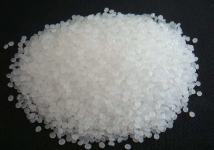read: 904 time:2024-10-12 16:33:37 from:化易天下
Calculating the molar mass of acetone is an essential step in many chemical processes, from industrial production to academic research. In this article, we will explore how to calculate the molar mass of acetone and break down the process into simple, easy-to-understand steps. Whether you are a student, a professional chemist, or simply curious, this guide will walk you through each stage of the calculation. Let's dive in!
Acetone (C₃H₆O), also known as propanone, is one of the simplest and most widely used ketones in both the chemical industry and household products. It is commonly found in nail polish removers, solvents, and as an intermediate in the manufacturing of plastics. Understanding how to calculate the molar mass of acetone is important for tasks like determining stoichiometric ratios in chemical reactions or preparing solutions with specific concentrations.
To calculate the molar mass of acetone, we first need to know its molecular formula. Acetone's chemical formula is C₃H₆O. This means that one molecule of acetone consists of:
The next step in calculating the molar mass of acetone is to determine the atomic masses of the elements involved. Atomic masses are found on the periodic table and are typically measured in atomic mass units (amu), which correspond directly to grams per mole (g/mol) when dealing with molar mass.
Here are the atomic masses of the elements in acetone:
Now, for each element in acetone, multiply the atomic mass by the number of atoms in the molecular formula. Here's how you do it:
The final step in determining how to calculate the molar mass of acetone is to sum the contributions of all the atoms:
Adding these values together:
36.03 g/mol + 6.048 g/mol + 16.00 g/mol = 58.078 g/mol
Thus, the molar mass of acetone is 58.08 g/mol.
Understanding how to calculate the molar mass of acetone is not just a basic academic exercise; it has practical implications in both laboratory and industrial settings. For example, the molar mass is essential for converting between grams and moles in stoichiometric calculations. It allows chemists to prepare solutions of known concentration and predict the yield of reactions involving acetone as a reactant or product.
Additionally, in large-scale industrial applications, such as the production of acetone through the cumene process, accurate molar mass calculations ensure the efficiency and safety of the operation.
In summary, learning how to calculate the molar mass of acetone involves understanding its molecular formula, referencing the atomic masses of carbon, hydrogen, and oxygen, and performing basic multiplication and addition. By following these simple steps, you can confidently determine that the molar mass of acetone is 58.08 g/mol.
Whether you're conducting chemical reactions or preparing laboratory solutions, this knowledge is foundational for anyone working with acetone. Keep these steps in mind, and you'll be able to tackle similar calculations with ease in the future.

Jincheng Petrochemical's 300000 ton polypropylene plant successfully trial production, 2024 polypropylene market analysis

The ABS market remains sluggish, what is the future direction?

Market differentiation of bisphenol A intensifies: prices rise in East China, while prices generally decline in other regions

The production method and process flow of silicone acrylic lotion, and what are the common raw materials